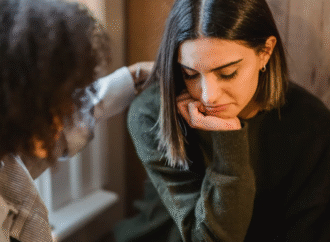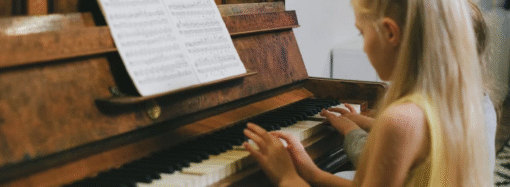Public high schools still aren’t taking school security seriously. Last month, hundreds of thousands of students in the Denver area stayed home from school when a woman in Florida suggested online that she was “obsessed” with the Columbine shootings.
The woman, named Sol Pais, disappeared from her home near Miami in mid-April. Soon after, her parents called local police, and apparently reported Pais posed some sort of non-specific danger to schools in Colorado. The local police then reported this to the FBI, which then notified the FBI in Denver. Pais was known to have suggested online that she intended to carry out a school shooting.
Pais was believed to have traveled to Denver, and hundreds of schools were closed in the Denver area. According to the local NBC affiliate:
The cancellations began just before midnight on Tuesday [April 16] …
This meant that more than 500,000 students across the Front Range were out of school on Wednesday.
It will not entirely be business as normal when they return to class on Thursday though.
In a letter to parents, Jeffco Public Schools said there will be “heightened safety and security measures in place.”
Pais was later found dead — apparently having committed suicide — and school security levels returned to normal.
Are School Closures the Only Tool Schools Have?
It’s nice that schools take extra precautions when someone has strongly suggested — like Pais did — that he or she plans to shoot up a school.
But one is left wondering: what if a potential school shooter doesn’t announce his intentions ahead of time? Don’t schools have any way of dealing with security threats that aren’t announced beforehand?
If Pais had traveled to a school instead of killing herself, would she have been able to walk into the school with a the shotgun she purchased?
It seems those in charge of school security have little confidence they could deal with such a situation — rather than control access to schools, school administrators close them down.
Indeed, not more than a month went by after April’s spate of “heightened security” measures that a student walked into a high school in Highlands Ranch, Colorado and started shooting.
According to local law enforcement, they “did not have [the suspects] on any radars.”
After shooters arrived and began their spree, it was necessary to call in police officers from off-site. There was apparently no on-site security equipped to address the potential for a shooting in the facility.
So, why haven’t schools stepped up to implement safety tools other than closing down schools when a possible perpetrator publicly announces his or her intentions?
Unfortunately, there continues to be resistance to the idea of developing serious, meaningful security strategies that directly address the situations that lead to deaths in areas such as schools, nightclubs, and hotels.
Mostly, this is due to nostalgia and fears of hurt feelings.
We’ve heard it all many times, of course. We can’t have greater security in schools, hotels, and shopping centers because “they will feel like prisons” or “kids will be hurt psychologically” or “it’s too expensive.”
When the very rare tragedy of this nature does occur, though, these lines of thinking all lead to the same scenario: explaining to a child with a gunshot wound: “sorry kid, we could have had armed security personnel at your school, but we didn’t want you to feel bad.”
The “too expensive” excuse is especially galling since public schools are absolutely overflowing with non-teaching, administrative personnel unrelated to classroom instruction. As this study shows, since 1970, the student population has increased 8 percent while the non-teacher staff population has increased 130 percent. Gee, where could we ever find the resources for more security personnel?
Even worse is the dismissal of security measures as an option because they conflict with someone’s (usually incorrect) notions of what things were like in the good old days. “My grandpa never had security at his school” is a common thought. Well, maybe grandpa should have had some security, since data suggests homicide rates throughout much of the the 1920s and 1930s were considerably higher than they are today. Among those murders, for example, was the Bath School Disaster of 1927 in which Andrew Kehoe murdered 38 elementary schoolchildren. Those children never had grandchildren who would one day pine for “simpler times.”
One’s feelings about the days of yore and how the world ought to be are not a great basis for taking practical steps toward increasing security.
In the real world, if school shootings really are a concern, then entrepreneurs and consumers need to work together to find practical, affordable strategies that can be implemented.
On the other hand, educational institutions and their political allies have attempted to palm off all responsibility to policymakers. They do this by insisting that everything will be fine if only politicians implement gun control measures. An assumption, of course, is that schools will then become immune to violence. Any reasonable person, of course, knows this isn’t true. If it were true, airports security personnel wouldn’t check bags for bombs. Bombs — the sorts that can blow up an airplane — are already tightly regulated, licensed, and often altogether banned. Not that this is an important economic or financial problem for schools. As government institutions, there is little connection between competence and funding. If many continue to perceive school safety to be an issue, school administrators can simply demand taxpayers provide more funding as a first step in addressing the issue.
From the point of view of schools, it’s much easier to place the responsibility — both financial and practical — for school safety on someone else whether they be legislators or taxpayers.
A Larger Context of Falling Crime Rates
Meanwhile, both homicides and violent crime overall have nearly halved over the past 20 years — as gun sales have increased.
Clearly, the general public is now safer than it has been in decades, and even the federal government admits school violence is now more rare than 20 years ago — in spite of creative attempts to inflate the “school shooting” numbers.
Advocates for more gun control may acknowledge all of this but will still insist there’s no downside to additional prohibitions on guns. The problem with this position, of course, is that it ignores the fact crime rates have declined at the same time total gun sales have increased. Can gun control advocates with certainty say there is no causality? It’s possible rising gun sales — mostly to law abiding citizens — have nothing to do with the decline in violence crime. But the burden of proof is always on those who want new government prohibitions.
After all, there are real downsides of prohibitions. The downsides are often the same as those we see in the drug war: more police searches and more prosecutions of peaceful citizens. As erosion of civil liberties, and in general, a move toward ever more untrammeled police power at the expense of the public. We’re told to put our trust in the hands of police — those same police who have been shown to run away from danger when it appears.
—
This article was republished with permission from the Mises Institute.
[Image Credit: Pixabay]
















Leave a Comment
Your email address will not be published. Required fields are marked with *